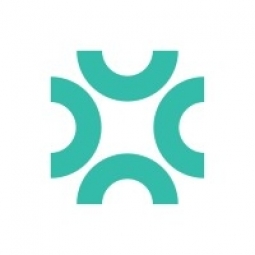Customer Company Size
Mid-size Company
Region
- America
Country
- United States
Product
- Planning Maestro
- Dynamics GP
Tech Stack
- Cloud Computing
- Data Integration
Implementation Scale
- Enterprise-wide Deployment
Impact Metrics
- Productivity Improvements
- Cost Savings
Technology Category
- Platform as a Service (PaaS) - Data Management Platforms
Applicable Industries
- Healthcare & Hospitals
- Education
Services
- Data Science Services
- System Integration
About The Customer
The Children’s Institute of Pittsburgh is a nonprofit organization dedicated to children with special needs and their families in Western Pennsylvania and Pittsburgh, Pennsylvania. The organization serves more than 6,000 children each year at seven campuses across Western Pennsylvania. The passionate team at The Children’s Institute is dedicated to helping children reach their full potential through educational services, autism services, outpatient physical and behavioral health services, early intervention, and child and family services. The organization had recently expanded from one company to five, adding complexity to their financial management.
The Challenge
The Children’s Institute of Pittsburgh, a nonprofit organization serving children with special needs and their families, was facing challenges with their financial reporting and budgeting processes. The organization had recently expanded from one company to five, adding complexity to their financial management. They needed to separate out the financials into five separate entities but also perform reporting at a consolidated level for their financial statements and audit purposes. They were using Planning Maestro strictly for budgeting and Dynamics GP for running pre-existing hard-coded reports, which was a time-consuming and difficult process. The organization was not fully utilizing the capabilities of Planning Maestro, and the manual processes in Excel were prone to inaccuracies and errors.
The Solution
The Children’s Institute of Pittsburgh expanded their use of Planning Maestro for their annual budgeting and planning and started using the cloud platform’s robust reporting capabilities. They used the solution’s spread methods, revenue calculations, and allocations capabilities to bring a new level of detail and accuracy to a complicated budgeting process. The organization also started using Planning Maestro’s advanced reporting capabilities to easily combine data from each of the five entities to create specific reports for each business unit. They were able to generate key reports, such as the total cost of running the Day School, at both the entity and consolidated levels. The organization is also working towards running complex and detail-rich reports solely out of Planning Maestro.
Operational Impact
Quantitative Benefit

Case Study missing?
Start adding your own!
Register with your work email and create a new case study profile for your business.
Related Case Studies.

Case Study
Hospital Inventory Management
The hospital supply chain team is responsible for ensuring that the right medical supplies are readily available to clinicians when and where needed, and to do so in the most efficient manner possible. However, many of the systems and processes in use at the cancer center for supply chain management were not best suited to support these goals. Barcoding technology, a commonly used method for inventory management of medical supplies, is labor intensive, time consuming, does not provide real-time visibility into inventory levels and can be prone to error. Consequently, the lack of accurate and real-time visibility into inventory levels across multiple supply rooms in multiple hospital facilities creates additional inefficiency in the system causing over-ordering, hoarding, and wasted supplies. Other sources of waste and cost were also identified as candidates for improvement. Existing systems and processes did not provide adequate security for high-cost inventory within the hospital, which was another driver of cost. A lack of visibility into expiration dates for supplies resulted in supplies being wasted due to past expiry dates. Storage of supplies was also a key consideration given the location of the cancer center’s facilities in a dense urban setting, where space is always at a premium. In order to address the challenges outlined above, the hospital sought a solution that would provide real-time inventory information with high levels of accuracy, reduce the level of manual effort required and enable data driven decision making to ensure that the right supplies were readily available to clinicians in the right location at the right time.

Case Study
Gas Pipeline Monitoring System for Hospitals
This system integrator focuses on providing centralized gas pipeline monitoring systems for hospitals. The service they provide makes it possible for hospitals to reduce both maintenance and labor costs. Since hospitals may not have an existing network suitable for this type of system, GPRS communication provides an easy and ready-to-use solution for remote, distributed monitoring systems System Requirements - GPRS communication - Seamless connection with SCADA software - Simple, front-end control capability - Expandable I/O channels - Combine AI, DI, and DO channels

Case Study
Driving Digital Transformations for Vitro Diagnostic Medical Devices
Diagnostic devices play a vital role in helping to improve healthcare delivery. In fact, an estimated 60 percent of the world’s medical decisions are made with support from in vitrodiagnostics (IVD) solutions, such as those provided by Roche Diagnostics, an industry leader. As the demand for medical diagnostic services grows rapidly in hospitals and clinics across China, so does the market for IVD solutions. In addition, the typically high cost of these diagnostic devices means that comprehensive post-sales services are needed. Wanteed to improve three portions of thr IVD:1. Remotely monitor and manage IVD devices as fixed assets.2. Optimizing device availability with predictive maintenance.3. Recommending the best IVD solution for a customer’s needs.

Case Study
HaemoCloud Global Blood Management System
1) Deliver a connected digital product system to protect and increase the differentiated value of Haemonetics blood and plasma solutions. 2) Improve patient outcomes by increasing the efficiency of blood supply flows. 3) Navigate and satisfy a complex web of global regulatory compliance requirements. 4) Reduce costly and labor-intensive maintenance procedures.

Case Study
Cloud-based healthcare solution for Royal Philips
Royal Philips wanted to launch its cloud-based healthcare solution HealthSuite Digital Platform in China to deliver services to help cope with challenges related to urbanization and population growth. Philips wanted to achieve this goal by combining mobile, cloud computing and big data technologies. To bring this platform and product to market, Philips required cloud computing and local technical service capabilities in China, in addition to a flexible IT infrastructure that could handle user requests.








